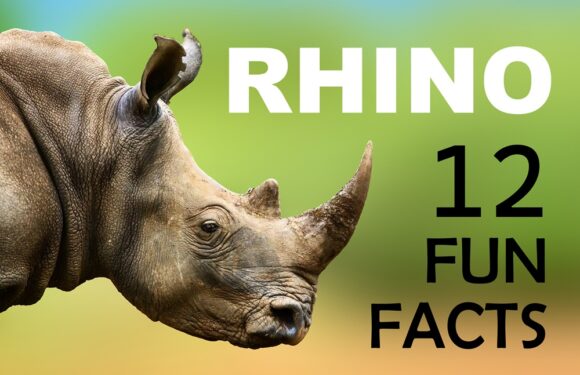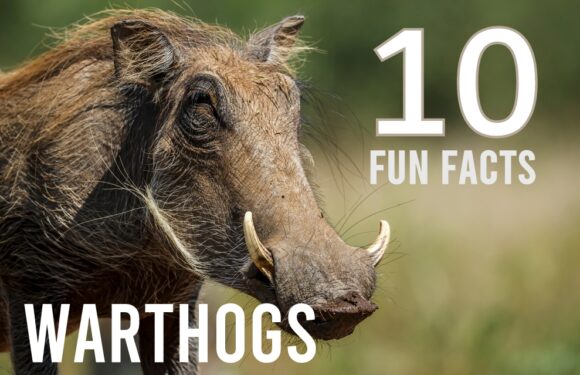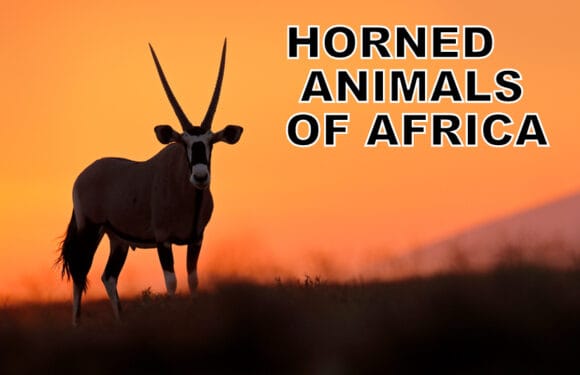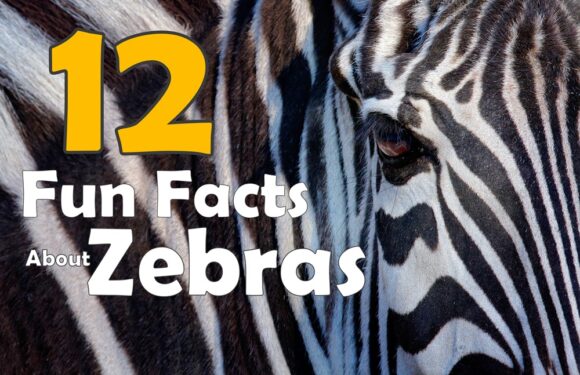
In the avian world, where diversity spans from tinniest hummingbirds to largest eagles, there are a group of birds that command respect due to their sheer size. The biggest birds in the world tell a story of ecological balance, survival strategies, and the challenges they faced.
Why Did Some Birds Become So Large?
The evolution of large size in birds is the result of a complex interplay of environmental conditions, ecological roles, and evolutionary pathways.
Flightlessness is a key factor in the evolution of the largest bird species. The energy demands and physical constraints of flight often set a natural size limit. But when the evolutionary trajectory of a bird leads to a flightless lifestyle, this size limitation is removed. The Ostrich, native to Africa, is a prime example. The Ostrich’s flightlessness has allowed it to evolve a large body size, which offers advantages like better thermoregulation and increased reproductive success.

Birds often evolved into larger sizes in ecosystems with abundant resources, low competition, and few threats. This phenomenon is particularly evident in island ecosystems, exemplified by the now-extinct Dodo bird of Mauritius. With plenty of food and a lack of natural predators, the Dodo evolved into a large, flightless bird. Similarly, the Cassowaries of New Guinea and Australia, evolved to be large and dominant in their rainforest habitats, facing few threats from other species.
In terms of behavioral aspects, larger birds often exhibit territorial dominance and may have an edge in mating and resource acquisition. This is seen in the large, territorial swans like the Trumpeter Swan, which dominates large territories in North America. Large size in birds can also be linked to their reproductive strategies. Species like the Emperor Penguin, which invest heavily in a smaller number of offspring, tend to be larger. The size and strength of these birds aid in protecting their young in harsh Antarctic conditions.

Adaptation to specific habitats and climates also plays a role. According to Bergmann’s rule, in colder climates, larger body sizes are favored for maintaining body heat, as seen in the large seabirds like the Albatross, which roam the cold Southern Ocean. Similarly, birds that have adapted to unique ecological niches, such as the large predatory Harpy Eagle of the South American rainforests, evolve larger sizes to capitalize on specific food sources and nesting strategies.
Did Birds Evolve From Dinosaurs?
Yes. Scientific evidence supports the theory that birds are a type of theropod dinosaur. Theropod dinosaurs are a diverse group of bipedal saurischian dinosaurs characterized by their hollow bones, three-toed limbs, and often sharp claws and teeth. Theropods are among the most recognizable dinosaurs, including species like Tyrannosaurus rex and Velociraptor.

Maniraptors, part of the theropod dinosaur subgroup, were small to medium-sized dinosaurs, many of which had feathers. The transition from these feathered dinosaurs to modern birds is a result of evolutionary adaptation and change over millions of years.
The discovery of fossils with clear links between birds and dinosaurs, such as Archaeopteryx, in the late 19th century, provided the first clues to this evolutionary relationship. Archaeopteryx, often considered the earliest and most primitive bird, exhibited features characteristic of both birds (such as feathers and the wishbone) and dinosaurs (like teeth and a long bony tail).

Further research and fossil discoveries have solidified the connection between birds and dinosaurs. Characteristics such as hollow bones, nest building, and similar lung and egg structures have been found in both groups. Modern birds are, therefore, considered not just descendants but also the only surviving lineage of theropod dinosaurs, making them living dinosaurs in a very real sense.
The 25 Biggest Birds in the World
1. Common Ostrich (Struthio camelus)

The Common Ostrich is the world’s largest bird, reaching heights of up to 9 feet (2.7 meters). Native to Africa, they are found primarily in grasslands, savannahs, and shrublands. These flightless giants can weigh as much as 346 pounds (157 kilograms), making them both the largest and among the heaviest birds. They’re also one of the fastest animals on earth. Their long, powerful legs allows them to run up to 45 mph (72 km/h). Ostrich eggs are the largest of any bird species, each equivalent to about 24 chicken eggs.
2. Somali Ostrich (Struthio molybdophanes)

The Somali Ostrich is a subspecies of the common ostrich that is native to the Horn of Africa. With a dull blue neck and thighs, the Somali Ostrich differs in coloration from its other African counterparts. This large, flightless bird, can grow to heights up to 9 feet (2.7 meters) tall and weigh as much as 290 pounds (130 kilograms). Like the common ostrich, the Somali Ostrich is quick. It can run up to 40 mph (64 km/hr), making it one of the fastest land birds. The bird’s diet primarily consists of plant matter, insects, and other small creatures.
3. Southern Cassowary (Casuarius casuarius)

The Southern Cassowary hails from the rainforests of Indonesia and Australia. It is the third-largest bird, standing up to 6 feet (1.8 meters) tall. Weighing as much as 190 pounds (86 kilograms), these birds have vibrant blue necks and noticeable casque on their heads. The casque is a hollow, pointed structure made of keratin, the same substance as our hair and nails. It is thought to play a role in protection or communication. Though shy in nature, cassowaries have been known to attack humans when threatened, and are known as the world’s most dangerous bird.
4. Northern Cassowary (Casuarius unappendiculatus)

The Northern Cassowary is also known as the Single Wattled Cassowary or the Golden-Necked Cassowary. This flightless bird is native to New Guinea’s rainforests. It stands up to 5.9 feet (1.8 meters) tall and weighs up to 176 pounds (80 kilograms). Its most noticeable features are its brilliant blue face and neck, a single red wattle, and a casque atop its head. The Northern Cassowary is a solitary bird, primarily feeding on fruits, seeds, and small animals.
5. Emu (Dromaius novaehollandiae)

Australia’s native Emu ranks as the world’s fifth-largest bird, nearly reaching 6 feet (1.8 meters) in height. With a weight of up to 150 pounds (70 kilograms), these flightless birds are known for their impressive running capability, sprinting across the Australian outback at considerable speeds up to 30 miles per hour (48 kilometers per hour). Emus have a varied diet, consuming plants, insects, and small animals. They are integral to Aboriginal Australian culture and are recognized for their curious and investigative behavior.
6. Emperor Penguin (Aptenodytes forsteri)

The Emperor Penguin is the largest of all penguin species, weighing as much as 99 pounds (45 kilograms). Native to Antarctica, they and are adapted to life in the extreme environment. Emperor Penguins have dense feathers and a thick layer of fat for insulation. Their breeding behavior is interesting, with males incubating eggs through the winter while females feed at sea. Emperor Penguins are known for their endurance and ability to survive in one of Earth’s most challenging habitats. These birds can reach heights of up to 4 feet (1.2 meters) and cannot fly.
7. Greater Rhea (Rhea americana)

The Greater Rhea, the largest of the Rhea species, is the largest bird in South America. Known as ñandus or South American ostrich, they are the largest native, extant bird anywhere in the Americas. It reaches heights of up to 5 feet (1.5 meters) and weighs around 88 pounds (40 kilograms). These birds live in grasslands as well as savannahs, wooded pampas, and chaparral, though they prefer areas with at least some tall vegetation. They are omnivorous, feeding primarily on plants, fruits, and seeds, and are known for their running ability.
8. Dwarf Cassowary (Casuarius bennetti)

The Dwarf Cassowary, also known as Bennett’s Cassowary, is a lesser-known yet intriguing species among the large birds of the Cassowary family. Native to the mountain forests of New Guinea and northeastern Australia, this bird is smaller than the more commonly known Southern Cassowary, standing at about 3.3 feet (1 meter) in height and weighing up to 75 pounds (34 kilograms). Despite its smaller size, the Dwarf Cassowary still boasts an impressive appearance with its dense, dark plumage and a striking blue neck. The bird possesses a characteristic casque on its head, though smaller in size compared to other cassowaries.
9. Lesser Rhea (Rhea pennata)

The Lesser Rhea, also known as the Puna Rhea, holds a significant place among the large birds of the world. Native to the open grasslands and Andean plateaus of Argentina, Chile, Bolivia, and Peru, this species is distinguished by its smaller stature compared to its cousin, the Greater Rhea, standing about 3 to 3.3 feet (about 1 meter) tall and weighing up to 55 pounds (25 kilograms). The bird’s plumage, a mix of brown and white, provides excellent camouflage in its natural habitat, aiding in its survival in the wild. Interestingly, Charles Darwin observed and studied this species during his voyage on the HMS Beagle, which contributed to its alternate name, Darwin’s Rhea.
10. Great Bustard (Otis tarda)

The Great Bustard is the first bird on this list that can fly. Found in Europe and Asia, the Great Bustard is the world’s heaviest flying bird. Males can weigh up to 46 pounds (21 kilograms) and have a wingspan of up to 8 feet (2.4 meters). They inhabit open grasslands where they feed on a diet of plants, insects, and small vertebrates. Great Bustards are known for their spectacular mating displays, where males puff up their feathers to attract females. Populations of Great Bustards breeding in Mongolia have been known to migrate over 1,200 miles (2,000 km) to China.
11. Kori Bustard (Ardeotis kori)

The Kori Bustard, native to the open grasslands and semi-deserts of Africa, is the second-heaviest bird capable of flight. With males weighing up to 44 pounds (20 kilograms), this impressive bird combines substantial size with the ability to take to the skies, a rare trait among birds of such weight. The Kori Bustard is known for its grey and brown plumage with black and white markings under the wings and around the neck. Despite their size and ability to fly, Kori Bustards spend most of their time on the ground, walking gracefully with measured steps.
12. King Penguin (Aptenodytes patagonicus)

Residing in the sub-Antarctic islands and the coasts of Antarctica, the King Penguin is the second-largest penguin species, standing about 3 feet (0.9 meters) tall and weighing up to 35 pounds (16 kilograms). Their appearance is marked by vivid colors on their head, neck, and chest. King Penguins are adapted to the cold Antarctic climate and are skilled swimmers, feeding on fish and squid. They form large colonies on land, which is important for their survival in the unforgiving Antarctic environment.
13. Trumpeter Swan (Cygnus buccinator)

The Trumpeter Swan is the largest extant species of waterfowl. This majestic bird graces the wetlands of North America. Males of this species, known as cobs, can reach impressive lengths of up to 6 feet (1.8 meters) and weigh as much as 30 pounds (14 kilograms), making them a standout in size among native birds. Characterized by their pure white plumage and contrasting black bill, Trumpeter Swans are beautiful in appearance. Trumpeter Swans are known for their loud, trumpet-like calls and their strong, monogamous pair bonds.
14. Mute Swan (Cygnus olor)

The Mute Swan, known for its grace and beauty, can grow up to 5 feet (1.5 meters) in length and weigh up to 32 pounds (14 kilograms). Despite their name, they are not entirely mute but less vocal than other swan species. Mute Swans are native to Europe and Asia and have been introduced to North America. They primarily feed on aquatic plants and small animals.
15. Domestic Turkey (Meleagris gallopavo)

Originating from the wild turkey species native to North America, the Domestic Turkey has been selectively bred over centuries to achieve larger sizes, especially in commercial breeds. A mature male, commonly known as a tom, can weigh about 30 pounds (13.5 kilograms) on average. However, the largest turkey ever recorded was 86 pounds (39 kilograms), which would put that specimen in third place on this list. Domestic turkeys typically exhibit a rapid growth rate, a trait highly valued in the poultry industry. In addition to their size, they are known for their pretty plumage, varying from white in commercial breeds to a mix of brown, gold, and other colors in heritage breeds.
16. Andean Condor (Vultur gryphus)

The Andean Condor is a symbol of power in South American culture. It is one of the largest flying birds by combined measurement of weight and wingspan. They can weigh up to 33 pounds (15 kilograms) with a wingspan of up to 10.5 feet (3.2 meters). Native to the Andes mountains, these birds are scavengers, feeding primarily on carrion. They play an essential role in the ecosystem by cleaning up after death. The Andean Condor is known for its graceful flight and its significance in Andean mythology.
17. Dalmatian Pelican (Pelecanus crispus)

The Dalmatian Pelican is the largest member of the pelican family, weighing up to 33 pounds (15 kilograms). With a wingspan reaching nearly 12 feet (3.6 meters), they are adept at soaring and swimming. Native to Europe and Asia, these birds primarily feed on fish, which they catch with their large, distinctive bill. The Dalmatian Pelican is often found in large lakes, rivers, and deltas, where they live in colonies. Although most species of pelicans are considered social birds, the Dalmatian Pelican is considered to be the least social of the group, sometimes opting to nest and forage alone.
18. Cinereous Vulture (Aegypius monachus)

The Cinereous Vulture, also known as the Black Vulture or Eurasian Black Vulture, is one of the largest birds of prey. Native to much of Europe and Asia, this bird boasts an impressive wingspan that can reach up to 10 feet (3 meters). Adult Cinereous Vultures can weigh up to 31 pounds (14 kilograms). With their dark plumage, broad wings, and heavy beak, they present an imposing figure. These vultures are predominantly scavengers.
19. Lappet-faced Vulture (Torgos tracheliotos)

The Lappet-faced Vulture is a striking and powerful bird of prey. This species, the largest vulture in Africa, boasts an impressive wingspan of up to 9.5 feet (2.9 meters) and can weigh up to 22 pounds (10 kilograms). Named for the folds of skin, known as lappets, the Lappet-faced Vulture cuts an imposing figure with its dark plumage, broad wings, and robust beak. Its beak is amongst the strongest of any bird, allowing it to tear through tough skin and muscle of carcasses that other scavengers cannot penetrate.
20. Wandering Albatross (Diomedea exulans)

The Wandering Albatross is famous for its enormous wingspan, which is among the largest of all flying birds. They weigh up to 26 pounds (12 kilograms) and are predominantly found in the Southern Ocean. With a wingspan reaching up to 11 feet (3.4 meters), these birds can glide effortlessly over the ocean. Their life at sea involves long-distance travel. They are known to travel up to 560 miles (900 kilometers) a day. The Wandering Albatross’s diet mainly consists of fish and squid, which they catch from the ocean surface.
21. California Condor (Gymnogyps californianus)

The California Condor is one of North America’s largest birds. With a wingspan of up to 9.8 feet (3 meters) and weighing up to 26 pounds (12 kilograms), these birds are quite impressive in their size. As scavengers, they feed mainly on carrion. The California Condor’s recovery is considered one of the most significant conservation success stories. At one point, there were only 27 California Condors in existence. Today, there are estimated to be more than 300 in the wild.
22. Whooper Swan (Cygnus cygnus)

The Whooper Swan is one of the largest and heaviest flying waterfowl species. Native to the northern regions of Europe and Asia, it is closely related to the North American Trumpeter Swan. Adult Whooper Swans can reach lengths of up to 5 feet (1.5 meters) and weigh approximately 26 pounds (12 kilograms). It has a long neck, white plumage, and a prominent yellow and black beak. The Whooper Swan’s call, comprised of a series of loud and trumpeting notes, is a characteristic aspect of their behavior, especially during courtship and territorial displays.
23. Marabou Stork (Leptoptilos crumenifer)

The Marabou Stork is a large wading bird native to Africa. Standing up to 5 feet (1.5 meters) tall and weighing up to 20 pounds (9 kilograms), they have a wingspan that can reach 12 feet (3.6 meters). These birds are scavengers, feeding on carrion, and are often seen walking around human habitations. These birds are known as one of the world’s ugliest animals. It has a massive dagger-like bill and naked pink head and neck that appear sunburned.
24. Harpy Eagle (Harpia harpyja)

The Harpy Eagle is one of the largest and most powerful eagles. Native to Central and South America, this bird can grow up to 3.5 feet (1 meter) tall and weigh up to 20 pounds (9 kilograms). They have a wingspan of up to 7.5 feet (2.3 meters). Harpy Eagles are apex predators, feeding on monkeys, sloths, and large birds. It is known for its great strength, capable of lifting prey equal to their body weight. These great birds are named after harpies, the predatory creatures of Greek mythology.
25. Shoebill (Balaeniceps rex)

The Shoebill is native to East African swamps and marshes. It is known for its distinctive, shoe-shaped bill. Standing up to 5 feet (1.5 meters) tall and weighing up to 12 pounds (5.4 kilograms), they have a wingspan of up to 8.5 feet (2.6 meters). The Shoebill’s diet consists primarily of fish, and they are known for their patient hunting technique, standing still for long periods before striking their prey. Its slow movements and tendency to stand motionless for long periods has given it a reputation of being “statue-like”.




























































